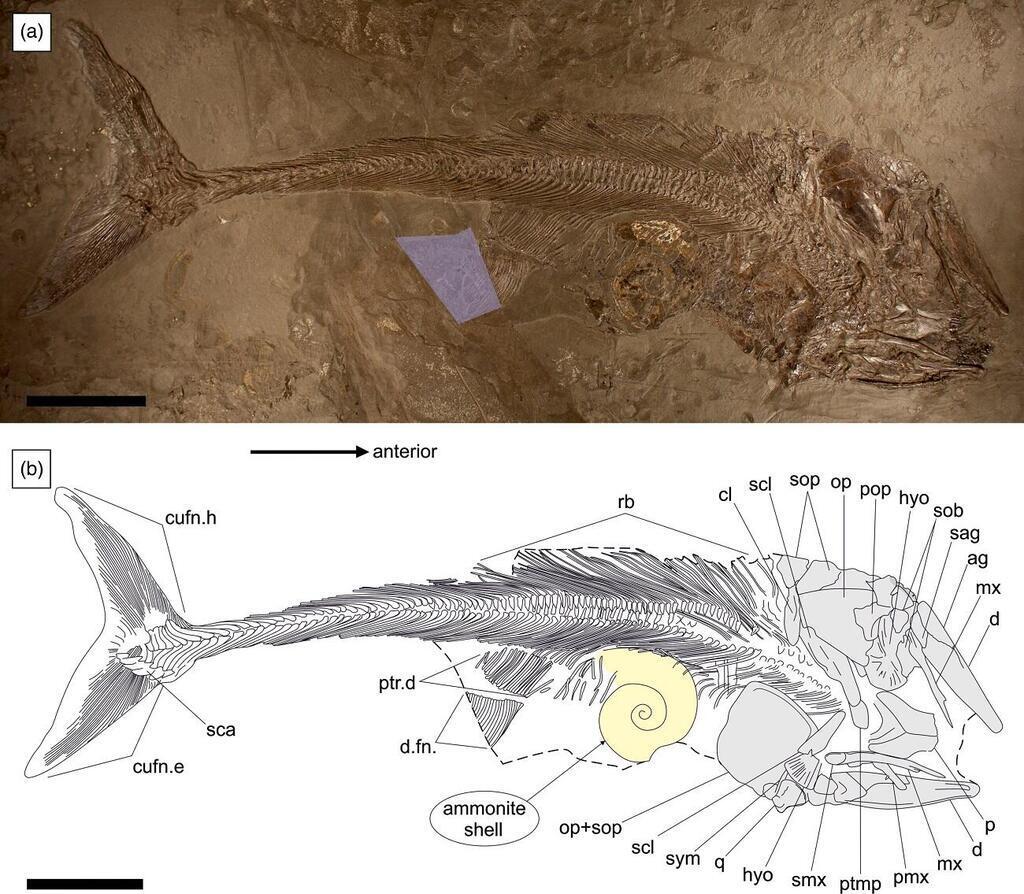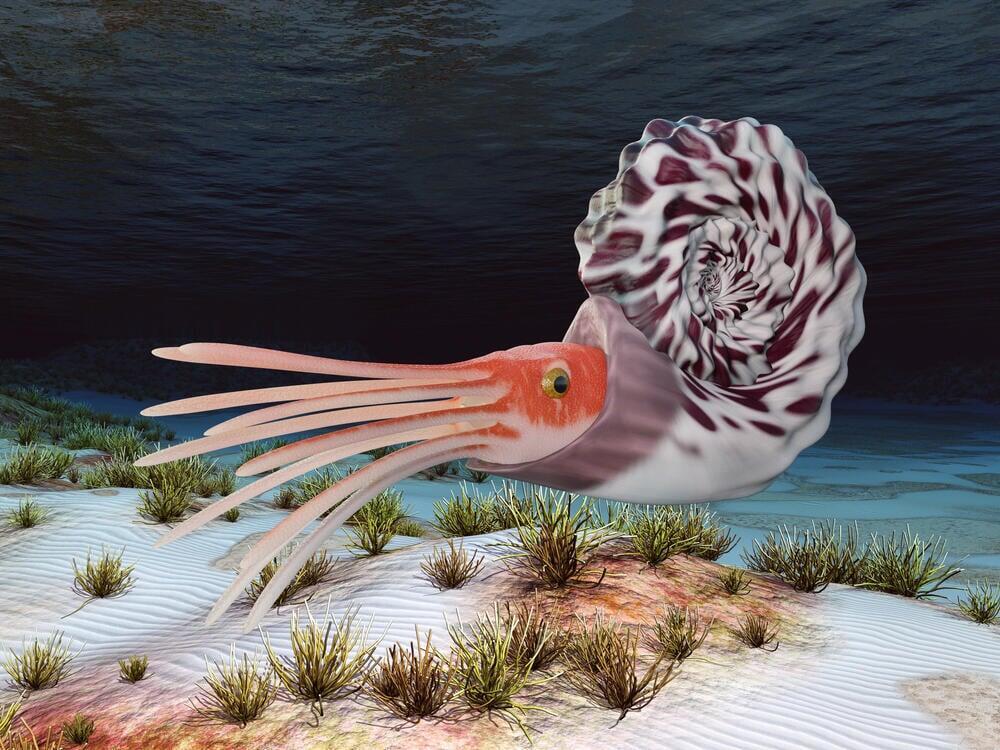Getting your Trinity Audio player ready...
Paleontologists have discovered new information about the eating habits of fish in the Jurassic period after they uncovered a fossil of a predatory fish with an ammonoid in its intestines. Further study showed the fish had swallowed more than it could chew and ultimately died.
Read more:
The Pachycormus macropterus, was discovered in Germany in a site called Posidonienschiefer Formation. The fish dated to between 174 and 182 million years ago, which places it early in the Jurassic period which began 199.6 million years ago and ended 145.5 million years ago.
2 View gallery


Fossil of a fish from the Jurassic period with ammonoid lodged in its stomach
(Photo: Geological Magazine )
The fish was an ancient ancestor of the lionfish, a predator from the family of scorpionfishes most common in the Atlantic, Pacific and Indian oceans.
Researchers Samuel Cooper and Erin Maxwell, paleontologists from the Museum of Natural History at the University of Hohenheim in Stuttgart, wrote in their study published in Geological Magazine, that they realized the fossil of the fish that they had found had digested a range of beings. A closer look revealed there were Mollusca resembling the modern squid and other small fish. They also found an ammonoid shell that had not been digested, indicating the fish had expired shortly after it swallowed its last meal.
It may be that the fish swallowed its last pray by mistake and it was too late to extract it and the ammonoid was swallowed, at which point its shell blocked the fish's intestines killing it within hours. The researchers believed having died, the fish sunk to the bottom of the sea and was buried in the mud, which preserved it and the content of its stomach for hundreds of millions of years, and now enabled researchers to study and identify them.
This is the first documented case of a death caused by pray in that kind of extinct fish that had not existed since the end of the Cretaceous period, some 66 million years ago.
The discovery highlights the importance of fossil study to better understand the behavior and ecology or ancient organism. By studying extinct species, researchers can gain a better understanding of how these organisms lived and interacted with their environment. Discovery of a fish fossil from the Jurassic period provides important insight into the eating habits of ocean predators of the time.



